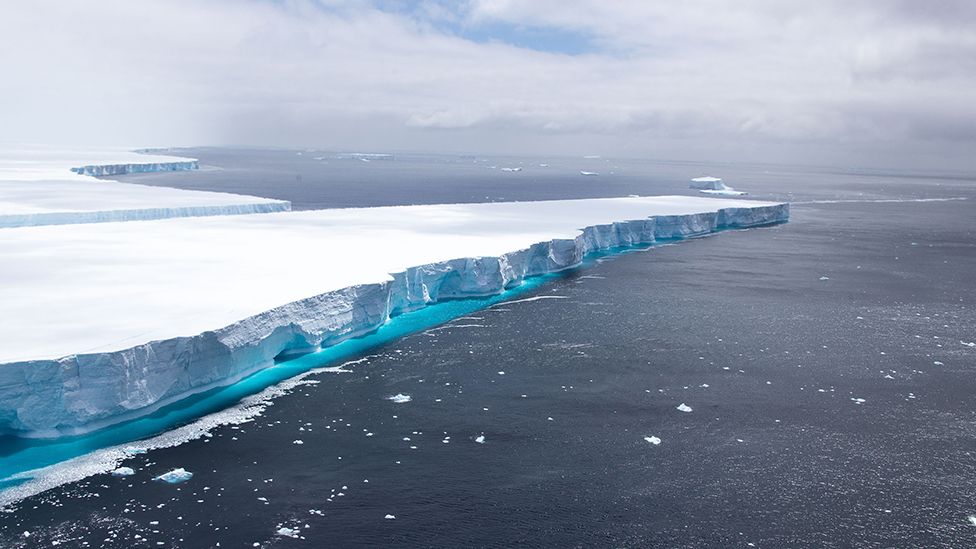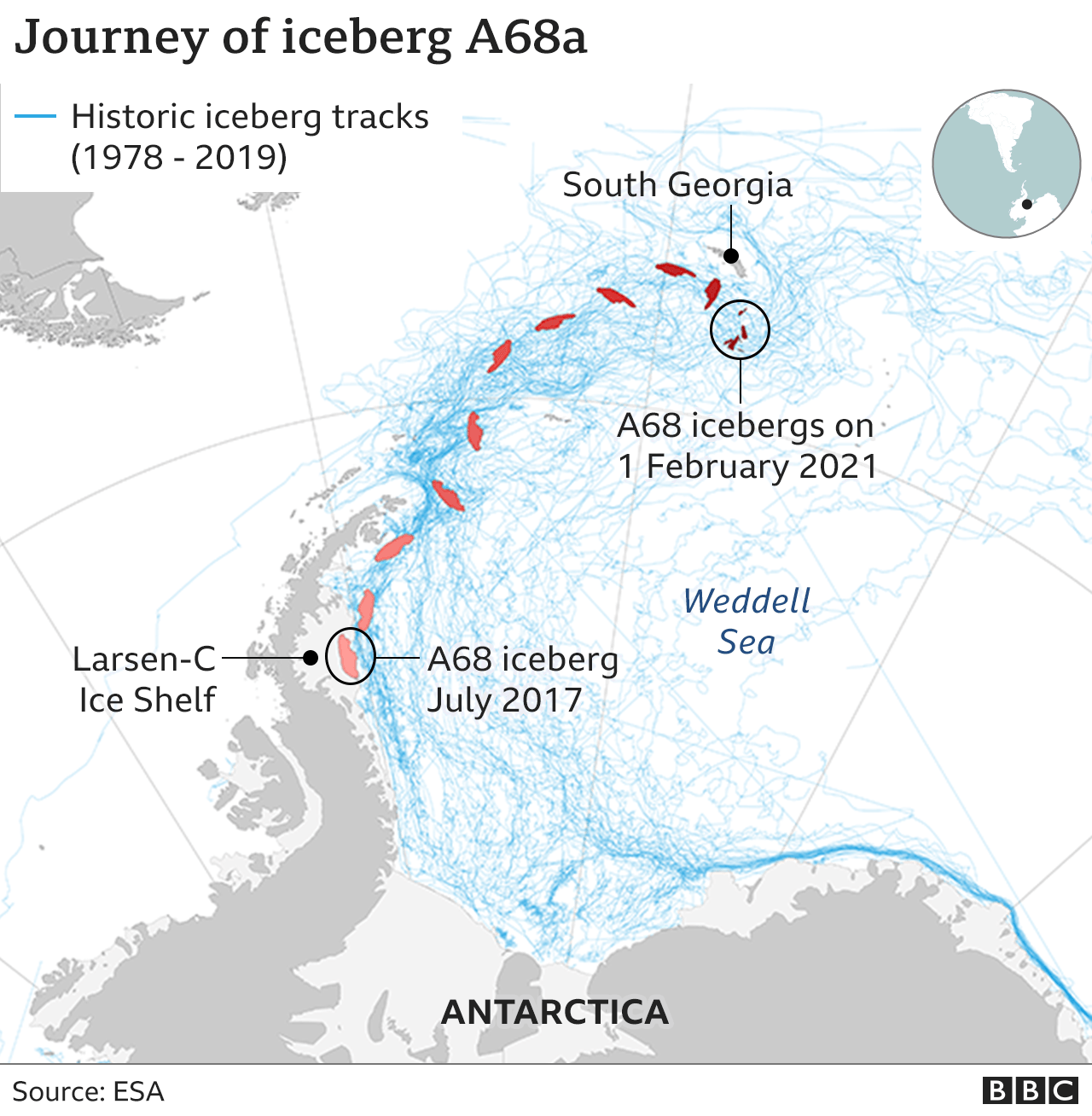A68: Iceberg that became a social media star melts away
 IMAGE COPYRIGHTCPL PHIL DYE RAF/CROWN COPYRIGHT
IMAGE COPYRIGHTCPL PHIL DYE RAF/CROWN COPYRIGHTThe iceberg that was for a time the biggest in the world is no more.
A68, as it was known, covered an area of nearly 6,000 sq km (2,300 sq miles) when it broke away from Antarctica in 2017.
That's like a small country; it's equal to a quarter of the size of Wales.
But satellites show the mega-berg has now virtually gone, broken into countless small fragments that the US National Ice Center says are no longer worth tracking.
A68 calved from the Larson C Ice Shelf on the edge of the Antarctic Peninsula, and for a year it hardly moved. But then it started to drift north with increasing speed, riding on strong currents and winds.
The billion-tonne block took a familiar route, spinning out into the South Atlantic towards the British Overseas Territory of South Georgia. The small island is where many of the biggest icebergs go to die. Caught in the local shallows, they are doomed to gradually melt away.
- Polar seafloor exposed after 50 years of ice cover
- Radar images capture new Antarctic mega-iceberg
- New Sentinels to check the pulse of Earth
Instead, it was the waves, the warm water and higher air temperatures in the Atlantic that eventually consumed A68. It simply shattered into smaller and smaller fragments.
"It's amazing that A68 lasted as long as it did," Adrian Luckman, from Swansea University, told BBC News.
"If you think about the thickness ratio - it's like four pieces of A4 paper stacked up on top of one another. So this thing is incredibly flexible and fragile as it moved around the ocean. It lasted for years like that. But it eventually broke into four-to-five pieces and then those broke up as well."

Posted: April 19, 2021, 8:14 AM